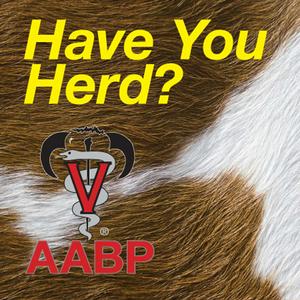Epi. 231 - Update from the American Veterinary Medical Association
AABP Executive Director Dr. Fred Gingrich is joined by AVMA President Dr. Sandra Faeh Butler, AVMA Associate Executive Vice President and Chief Veterinary Officer Dr. Gail Golab, and AVMA Associate Executive Vice President and Chief Advocacy Officer Dr. Kent McClure. Faeh updates us on the current AVMA membership, which includes over 108,000 veterinarians and represents at 2.9% increase in membership over the past year. One very important aspect of AVMA activities to bovine veterinarians is advocacy. We discuss how AVMA identifies advocacy priorities and uses AVMA entities and policy to develop this advocacy. There are a number of issues that AVMA is currently providing advocacy for that are important to bovine veterinarians including access to critical drugs such as xylazine, access to antimicrobials for food animals, boosting the sustainability of rural veterinary practice, support of the Rural Veterinary Practice Enhancement Act, advocacy for the FARM bill, ensuring DEA regulations are compatible with ambulatory bovine practice, advocating against a mid-level practitioner position, and supporting the requirement for establishing a VCPR with an in-person visit and using telemedicine to support that existing VCPR. Golab also provides information about the work of AVMA on the recent influenza outbreak in dairy cattle and poultry. AVMA plays a key role in collaboration with all stakeholders and convened a meeting last year with stakeholders across federal and state agencies as well as veterinary and producer groups representing bovine, swine and poultry groups. The result of this meeting was the development of the National Milk Testing Strategy to support nationwide surveillance of dairy farms. AVMA guidelines are also important for veterinary medicine. Golab provides an update on the humane endings and depopulation guidelines, how they are developed and where we are in the new revisions for these guidelines. AVMA also recognizes that veterinary medicine, and food animal commodities, are globally influenced, and AVMA provides international advocacy to support not only bovine practice but also beef and dairy issues on the global market. Our guests encourage bovine veterinarians to help AVMA in these advocacy efforts. This includes maintaining membership in AVMA, volunteering for committee and council membership, enrolling in the Congressional Advocacy Network, enrolling in the AVMA ambassador program, participating in the annual AVMA legislative fly-in, and donating to the AVMA Political Action Committee (AVMA PAC). Links:Advocacy resourcesPolitical Action Committee (PAC)AVMA Congressional Advocacy NetworkVolunteer with the AVMA
